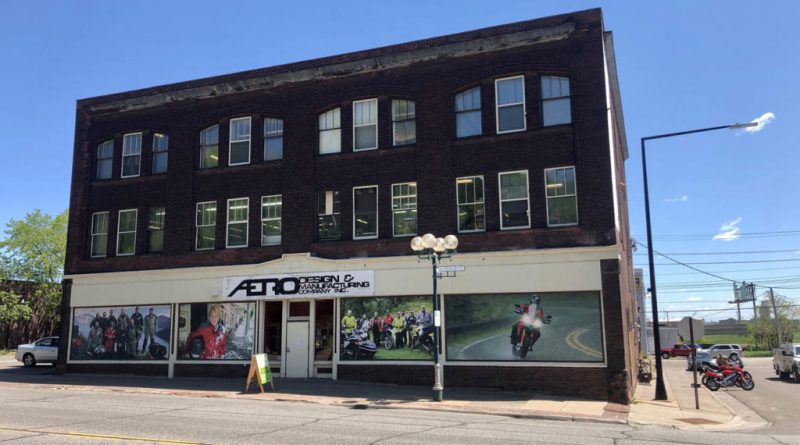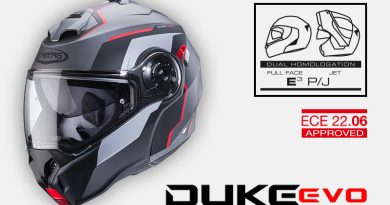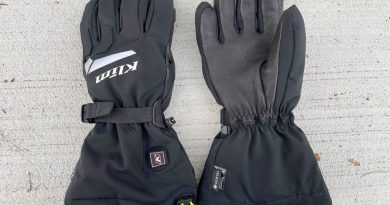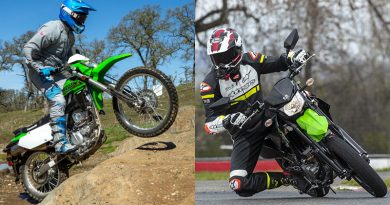Aerostich: The Great American Motorcycle Suit
The Aerostich factory on 18th Avenue West was originally a candy factory.Today the sweet stuff is created solely for motorcyclists.
To tell the story of the legendary Aerostich riding suit is to tell a story about America. The dream of it, but also the tenacity required to navigate its possibilities. Because running a successful small business in America these days demands more than a clear vision and hard work. It requires staying power.
RELATED: Aerostich R-3 One-Piece Suit | Gear Review
Native Duluthian Andy Goldfine was committed to the dream of creating a small business long before he knew what product or service he might offer. Separately, the concept of a lightweight, armored, easy-to-use coverall to wear over clothes as one commuted to and from their job was born from a personal wish to own such an item. These two ambitions merged when Goldfine conjured the first Roadcrafter one-piece riding suit back in 1983.
What Schott is to leather and Belstaff is to waxed cotton, Aerostich is to synthetic-fiber textiles used to create durable, high-performance motorcycle gear. The world is overflowing with it now, but back in the early ’80s, people weren’t talking about things like breathability or tensile strength or viscoelastic foam armor. Cordura and Gore-Tex were still exotic. And so, without any kind of roadmap, Goldfine created a totally new type of riding gear, and boy, did that suit show us what our leather gear was missing.
The Aerostich building in Duluth is no factory, instead feeling more like an artist’s enclave where the skilled craftspeople combine forces to create exceptionally high-quality riding gear. It’s cool to see, and all visitors who happen by are welcome to a tour. For me, it made my connection to my latest Roadcrafter suit so much more significant, having watched in person the craftspeople who handwrite their signatures inside each suit.
I (literally) stepped into my first Roadcrafter back in 1986 when Goldfine was visiting the Rider offices in California, and I have been living in these suits ever since. Like so many motojournalists of that era, I found the Roadcrafter wasn’t just the gold standard for commuting, it was also magic for sportbike riding and touring. Newer designs (R-3 Darien and AD1) from the Aerostich factory in Duluth might be just as popular these days, but when I last visited the shop I was hunting for a new Roadcrafter Classic two-piece to fit my now middle-aged bod.
It was my first time in Goldfine’s very Minnesotan three-story brick building – a former candy factory – and it was obvious right away this is a cool place for bikers to chill. After I was fitted for my new suit, I got a tour of the different floors and stations where skilled craftsmen and craftswomen, a fair number of riders among them, cut and assemble the various fabric into “kits,” which are then handed over to expert sewers and finally seam-taping machine operators before each garment is inspected and prepared to meet its new owner.
RELATED: Andy Goldfine: Ep. 14 of the Rider Magazine Insider Podcast
The handcrafting of the suits is enjoyable to watch, especially since everyone working here – some who have been with Goldfine for decades – seems to enjoy their craft.
But one of the things I leave most impressed by is how fiercely this operation works to remain “Made in the USA.” For example, Goldfine explains that, due to current trade policies, the tariff on bringing in fabric from Asia is about twice as high as the tariff for bringing in completed riding gear. “It’s as if the USA doesn’t want commercial/industrial sewing activity done in this country,” he told me.
Supply chain issues caused by Covid have only deepened the challenge. Yet Goldfine remains true to his standards, a rare example of an apparel manufacturer uneasy with the lure of inexpensive offshore production, even as many consumers take the bait, sometimes unwittingly trading quality for low prices on everyday goods.
While the riding suits remain the pillar of Aerostich offerings, Goldfine has created and collected a dangerously desirable array of complementary apparel items, accessories, and equipment to make riding “easier, safer, and more comfortable.” It might be a heated mid-layer, a unique tool, perfect-fitting earplugs, stink-resistant socks, or a new tent you didn’t know you needed until you saw it on the website or in that cherished catalog that occasionally shows up in the mail.
And while he finds satisfaction in his artful curation of products and the affirmation of Aerostich loyalists, Goldfine’s core intention isn’t driven by being fashionable or even making money. His deeper motivation is about promoting the physical, psychological, and societal benefits of riding motorcycles every day. It’s why he created Ride to Work Day, to remind us of the Rx effect of being on the motorcycle, even for a short “useful” ride each day. He believes riding makes us “better-functioning, calmer, clearer” people and also brings economic, environmental, and congestion-lessening benefits to our communities.
It’s with these big thoughts in mind that I step into my fresh Roadcrafter a week later. How the heck can a riding suit feel like home? This one does. No matter what newfangled riding apparel comes into my life to be tested, it’s the all-American Aerostich that endures.
For more information, visit aerostich.com.
The post Aerostich: The Great American Motorcycle Suit first appeared on Rider Magazine.




